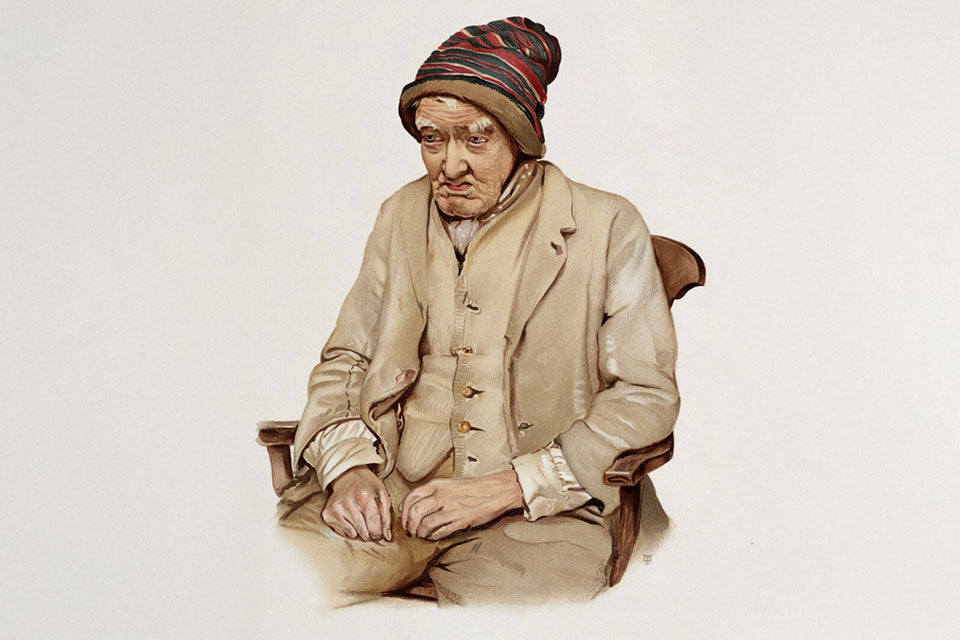It isn’t only our posture, core strength, and metabolism that are undermined by sitting
We all spend at least some time sitting, and most of us spend a lot of time sitting. On average Americans sit as much as 8 hours each day.1 We sit not only because it’s restful, but also because sitting is required. Sitting is built into our work, our amusements, our lives. And sitting is even built into our very architecture: Try looking out a window if you’re sitting on the floor; the room expects you to be sitting in a chair or standing if you want to see what’s outside.
But while we think siting is our normal default posture there is a large and growing body of research that can be simply summarized: “Sitting is the new smoking”. The most discussed harms of our addiction to sitting are postural changes and back pain, but far more important is ”metabolic syndrome”, a constellation of medical problems (obesity, type 2 diabetes, heart disease and increased mortality) brought on by the bouts of metabolic inactivity attributable to prolonged sitting.2
And as if the above litany of problems caused by sitting weren’t bad enough, now brain atrophy (neurodegeneration) and worsening cognition have been added to the list. Earlier this year a paper by researchers at Vanderbilt’s Memory and Alzheimer’s Center appeared in the prestigious journal Alzheimer’s & Dementia. The study followed on 404 participants carefully for 5 years, monitoring movement with accelerometers and assessing brain anatomy with scans and neurologic function with physical exams and questionnaires. They found that sedentary behavior was associated with actual anatomic changes in the brain as well as concomitant decreases in memory and language performance. Importantly, these changes were seen even in subjects who exceeded recommended levels of physical activity. The authors believe the detrimental effects of sedentary time on cardiovascular function3 is at least partially responsible for the anatomic and cognitive changes seen in their subjects’ brains. They conclude: “From a personalized medicine approach, healthcare professionals might consider assessing not only a patient’s exercise regimen but also the amount of time they are sedentary throughout the day, recommending a reduction in such sedentary behavior in addition to increasing daily physical activity.”
This study, although well done, did not explicitly correct for the possibility of “reverse causation”. That is, the study did not address the possibility that their findings might be explained if subjects developing more brain loss and disfunction simply tended to sit more, in effect reversing the arrow of causality. However, participants in this study were followed for up to 7 years, and so allowed researchers to observe how baseline sedentary behavior predicted later brain and cognitive changes. Additionally, participants were dementia-free at study entry, likely minimizing the likelihood that advanced neurodegeneration drove sedentary behavior at least initially.
And these new findings have precedent. A recent study in JAMA4 came to a similar conclusion in a much larger and more diverse group of patients from Great Britian. The authors of this second study came to a similar conclusion: “Among older adults, more time spent in sedentary behaviors was significantly associated with higher incidence of all-cause dementia.”
“Among older adults, more time spent in sedentary behaviors was significantly associated with higher incidence of all-cause dementia.”
What can we do to protect ourselves from the harms of passive sitting? Unfortunately, there isn’t an easy solution.
But we know what doesn’t work.
Although it seems obvious that time spent exercising should offset and perhaps undo the problems caused by passive sitting, this is not to be the case. Several studies have found that sitting seems to be an independent risk factor, that is, the harm done by sitting isn’t undone by exercise.5 It doesn’t seem fair, but it the helpful effects of exercise are kept in a separate ledger from the harms of passive sitting. So, don’t stop exercising, but don’t expect time at the gym to undo time spent slumped in your chair.
Really, the only proven solution to the harms caused by sitting is simply to sit less, or sit for shorter periods of time.
Or, possibly, to sit differently.
How might we sit differently? Well, for almost all of the last 200,000 years humans lived as hunter gatherers unencumbered by furniture. Their preferred resting posture6 was squatting, a so called active resting posture that keeps the vastus lateralis (quadriceps) and soleus (calf) muscles engaged. This is an advantageous posture because it results in 20–40% of the muscle activity required for walking and so promotes lipid metabolism, reducing cardiovascular risks. Researchers are so convinced of the advantage of squatting over sitting that one, David Raichlen (a researcher in the biology department at University of Southern California) suggests we just “get up, move around, and… when you turn on Netflix, try squatting.” Unfortunately, most Western adults can’t squat at all, let alone for an entire episode of Love Island.
If squatting is too big an ask there are other workarounds. A number of companies now make chairs that keep people moving while sitting. CoreChair in Canada, Mishu and Swopper in Germany, and QOR360 in the USA all design and manufacture chairs that encourage, even require, continuous subtle movement while sitting. (Full disclosure: I cofounded QOR360). After a few days of acclimatizing to this new approach to sitting most people easily adapt to the modest increase in activity while sitting. And, while simply switching to a different chair seems like a small change, the improvements in overall body mechanics and metabolism can be substantial over time.
Active sitting is new enough that there are as yet no long-term studies of its impact on longevity or mental function. But because sedentary behavior is the root cause of the problem, it’s very likely that moving while sitting can make a contribution to both physical and mental health and longevity. Sometimes a small change can make a big difference, and swapping out your “ergonomic” office chair might just be one of those small changes with a big payoff.
1Yi, S. S., Bartley, K. F., Firestone, M. J., Lee, K. K., & Eisenhower, D. L. (2015). Self-reported sitting time in New York City adults, The Physical Activity and Transit Survey, 2010–2011. Preventing Chronic Disease, 12, 140488. https://doi.org/10.5888/pcd12.140488
2Chu, A. H. Y., & Moy, F. M. (2013). Joint association of sitting time and physical activity with metabolic risk factors among middle-aged Malays in a developing country: A cross-sectional study. PLOS ONE, 8(4), e61723. https://doi.org/10.1371/journal.pone.0061723
3Carter, S., Hartman, Y., Holder, S., Thijssen, D. H., & Hopkins, N. D. (2017). Sedentary behavior and cardiovascular disease risk: Mediating mechanisms. Exercise and Sport Sciences Reviews, 45(2), 80–86. https://doi.org/10.1249/JES.0000000000000106
4Raichlen, D. A., Aslan, D. H., Sayre, M. K., Seeman, T. E., Krendl, A. C., & Carlson, J. A. (2023). Sedentary behavior and incident dementia among older adults. JAMA, 330(2), 143–151. https://doi.org/10.1001/jama.2023.14345
5Koster, A., Caserotti, P., Patel, K. V., Matthews, C. E., Berrigan, D., Van Domelen, D. R., Brychta, R. J., Chen, K. Y., & Harris, T. B. (2012). Association of sedentary time with mortality independent of moderate to vigorous physical activity. PLOS ONE, 7(6), e37696. https://doi.org/10.1371/journal.pone.0037696
6Raichlen, D. A., Pontzer, H., Zderic, T. W., Wood, B. M., Ocobock, C., & Zderic, T. W. (2020). Sitting, squatting, and the evolutionary biology of human inactivity. Proceedings of the National Academy of Sciences, 117(13), 7115–7121. https://doi.org/10.1073/pnas.1911868117





Leave a comment
All comments are moderated before being published.
This site is protected by hCaptcha and the hCaptcha Privacy Policy and Terms of Service apply.